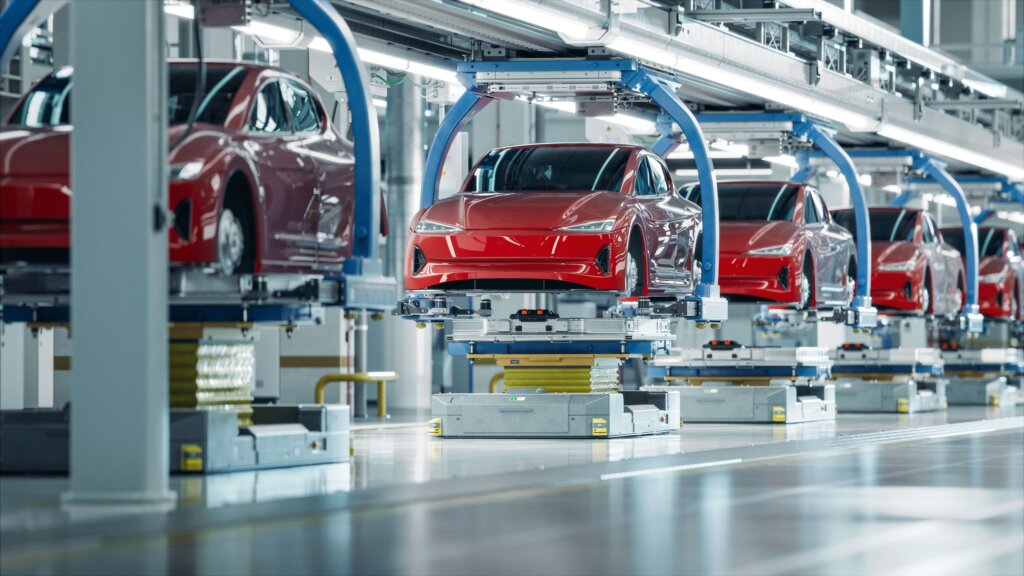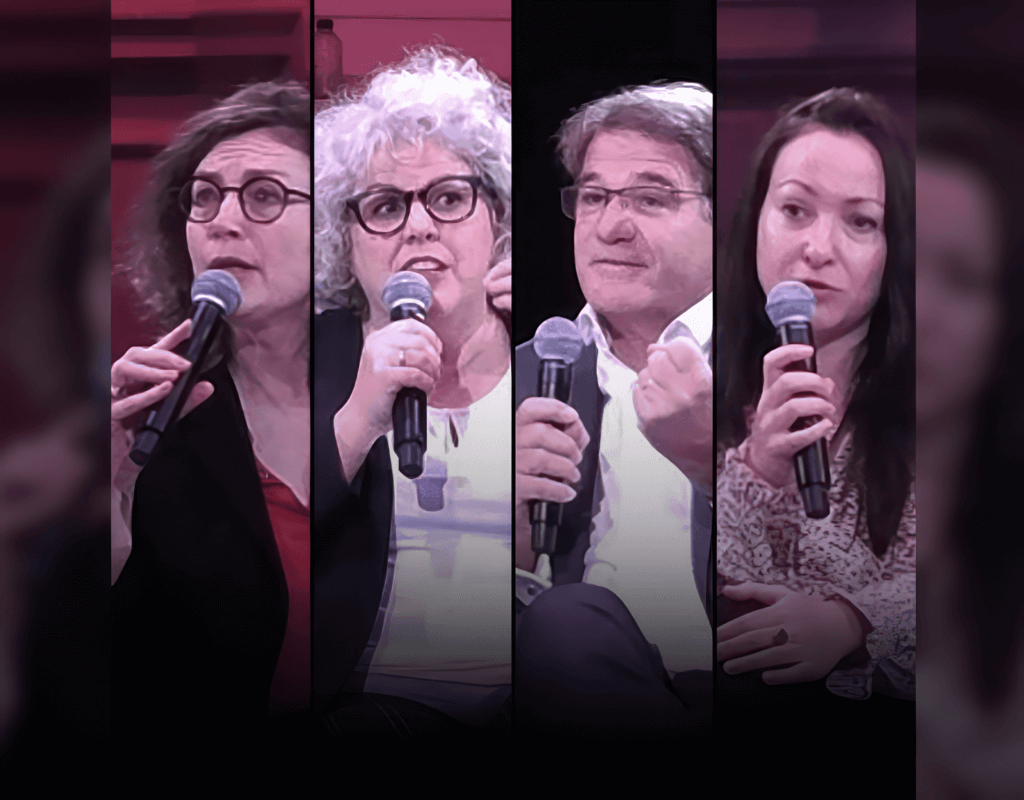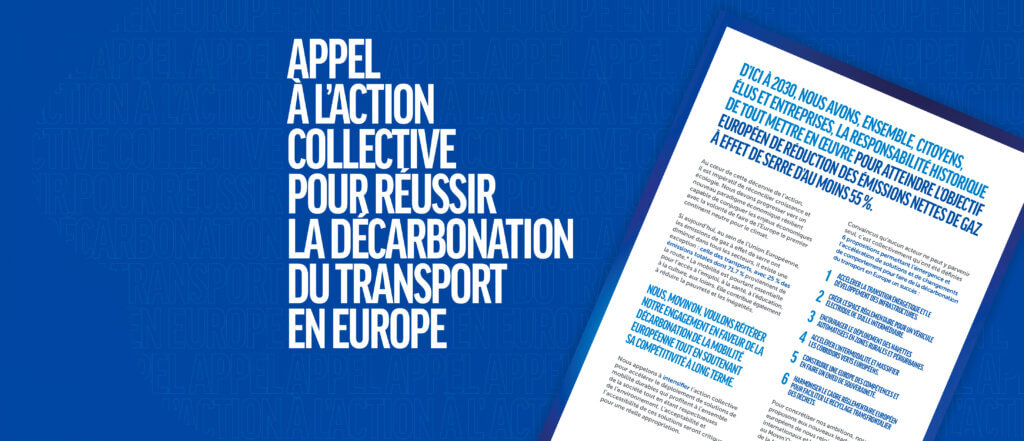U.S. Embraces Nuclear Power to Decarbonize Grid for EV Charging
The Biden Administration is making detailed plans to rely on the “clean energy” of nuclear power after decades of fears about nuclear power plants, such as radioactive leaks, safe storage of nuclear waste, and the clandestine use of plutonium or enriched uranium to manufacture nuclear weapons. The U.S. is designing smaller, modular nuclear power facilities and also is planning to build more large nuclear plants.
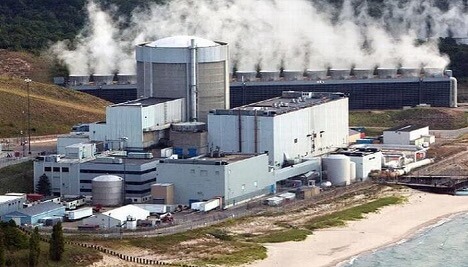
As of April 30, 2024, there were 54 commercially operating nuclear power plants with 94 nuclear power reactors in 28 states. The State of Georgia is now the largest provider of clean energy in the country. After a 30 year pause in building nuclear plants, two new nuclear power units were commissioned in April. On May 29, Georgia Governor Brian Kemp happily led a delegation to view the new nuclear power units.
May 29 was a big day for nuclear power in the United States. In Washington, the Biden government hosted a closed-door White House Summit on Domestic Nuclear Deployment, highlighting the “collective progress” being made across both public and private sectors.
At the Summit, the administration announced the creation of a Nuclear Power Project Management and Delivery working group that will draw on leading experts from across the nuclear and megaproject construction industry to help identify opportunities to “proactively mitigate sources of cost and schedule overrun risk.”
Working group members are federal government entities, including the White House Office of Domestic Climate Policy, the White House Office of Clean Energy Innovation and Implementation, the White House Office of Science and Technology Policy, and the Department of Energy.
The working group will engage project developers, engineering, procurement and construction firms, utilities, investors, labor organizations, academics, and nongovernmental organizations. Each is expected to offer views on how to help further the administration’s goal of delivering an efficient and cost-effective deployment of clean, reliable nuclear energy and ensuring that learnings translate to cost savings for future construction and deployment.
Nuclear energy advocates attended the White House Summit on domestic nuclear deployment and will help advise the new federal initiative to support building new grid-scale nuclear reactors.
The event showcased recent policy developments and new industry investments that have changed the playing field for nuclear during the past few years, American Nuclear Society Executive Director/Chief Executive Officer Craig Piercy, who attended the summit, said.
“This event is the clearest evidence yet that the entire executive branch, from the White House down, is aligned to support a rapid expansion of nuclear energy. It was also a challenge to the nuclear industry to move faster and deliver,” Piercy said.
The White House is calling it “the largest sustained push to accelerate civil nuclear deployment in the United States in nearly five decades.”
U.S. Deputy Energy Secretary David Turk outlined the new nuclear program – its risks and strengths – in the U.S. National Statement to the 2024 IAEA International Conference on Nuclear Security on May 21, 2024 in Vienna, Austria.
“TO MEET OUR NET-ZERO EMISSIONS GOALS, THE UNITED STATES IS PRIORITIZING THE DESIGN, DEVELOPMENT AND DEPLOYMENT OF ADVANCED NUCLEAR TECHNOLOGIES, INCLUDING ADVANCED AND SMALL MODULAR REACTORS THAT INCORPORATE THE HIGHEST STANDARDS OF NUCLEAR SAFETY, SECURITY AND SAFEGUARDS.” – David Turk, U.S. Deputy Energy Secretary
“These technologies promise to be critical tools for realizing the global expansion of peaceful nuclear energy and combating climate change. But they can also add to fissile material stockpiles and lower the barrier to nuclear proliferation,” Turk acknowledged.
“That is why the United States is committed to avoiding the production, use, and accumulation of weapons-usable nuclear material and the use of these materials in new nuclear fuels, where technically and economically feasible,” he said.
“We are also working to provide a licensing pathway and technology-neutral frameworks for U.S. advanced reactor designers to enhance safety, security, safeguards, and proliferation resistance. Our partnership with the IAEA will be essential to our success in simultaneously realizing the benefits of the next generation of nuclear energy, while reducing nuclear proliferation and security risks,” Turk told the IAEA conference.
U.S. Military Onboard With Advanced Reactors
The U.S. Army is about to release a Request for Information to inform a deployment program for advanced reactors to power multiple Army sites in the United States.
Small modular nuclear reactors and microreactors can provide defense installations resilient energy for several years amid the threat of physical or cyberattacks, extreme weather, pandemic biothreats, and other emerging challenges that can all disrupt commercial energy networks.
Alongside the current defense programs through the Department of the Air Force microreactor pathfinder at Eielson Air Force Base and the Office of the Secretary of Defense Strategic Capabilities Office (SCO)
The U.S. Army is developing Project Pele, a prototype transportable microreactor protype. Project Pele is a high-temperature, gas-cooled and TRISO-fueled microreactor, transportable within mobile shipping containers. It’s scheduled for testing at the Idaho National Laboratory in 2025.
TRISO stands for TRi-structural ISOtropic particle fuel. Each TRISO particle is made up of a uranium, carbon and oxygen fuel kernel encapsulated by three layers of carbon- and ceramic-based materials that prevent the release of radioactive fission products.
About the size of a poppy seed, these particles can be fabricated into cylindrical pellets or billiard ball-sized spheres for use in either high temperature gas or molten salt-cooled reactors.
Work is underway at BWXT Advanced Technologies in Lynchburg, Virginia, where a renovated facility will host the assembly of another DOD reactor, a space-bound reactor for DRACO, the U.S. nuclear thermal rocket program being led by the Defense Advanced Research Projects Agency in collaboration with the U.S. space agency, NASA.
Jeff Waksman, a program manager in the Defense Department’s Strategic Capabilities Office (SCO), and Joe Miller, president of BWXT Advanced Technologies, provided an update on Project Pele in an August 2, 2023 American Nuclear Society webinar.
The DOD is interested in microreactors to provide power in remote or islanded locations, Waksman said, and also to offset fossil fuels, both “for climate purposes” and “from a strategic and operational perspective.”
“The exhaust on Pele is hot air, literally,” Waksman said. “I do think that using nuclear power for both heat and also process heat for chemical processes, desalination, synthetic aviation fuel – those are all applications that that the Department of Defense is going to be looking at in the future.”
The idea for Project Pele originated at U.S. Indo-Pacific Command in Hawaii, according to Waksman. Pele is named after the Hawaiian goddess of fire and power,” he said.
Funding for Project Pele is increasing from $117 million to $168 million and the project is nearing the testing stage. Waksman said the team hoped “to have the final design approved by the Department of Energy by the spring.”
The Biden Administration has reduced, and aims to eliminate, reliance on Russian uranium for civil nuclear power. To that end, the federal government is building a new supply chain for nuclear fuel.
This supply chain endeavor includes:
* – signing on to the 2023 multi-country declaration at the UN’s annual climate conference COP28 to triple nuclear energy capacity globally by 2050;
* – developing new reactor designs;
* – extending the service lives of existing nuclear reactors; and
* – growing the momentum behind new deployments.
The United States is also taking steps to mitigate project risks associated with large nuclear builds and position U.S. industry to support “an aggressive deployment target.”
Utilizing transformational changes taking place throughout the U.S. energy system, the administration is building on President Biden’s goal of a carbon free electricity sector by 2035. At the same time, consumers must have access to affordable, reliable electric power, and clean energy jobs.
“For decades, nuclear power has been the largest source of clean energy in the United States, accounting for 19 percent of total energy produced in 2023.” The industry directly employs 60,000 workers and supports hundreds of thousands of other workers, the White House said on a May 29 Fact Sheet.
Powering Up to Charge EVs
The United States aims to have 50 percent of all vehicles sold each year be zero-emission by 2030. A 2023 analysis from the consultancy McKinsey & Company, estimates that achieving this goal would put 48 million electric vehicles, or 15 percent of all total vehicles, on the road in 2030.
“The power sector has to decarbonize. At present, it accounts for about 30 percent of global emissions, and electricity demand could triple by 2050, driven by increasing electrification and economic growth,” McKinsey authors said in a May 2023 commentary.
“Unlike renewables that offer an intermittent energy supply, nuclear has already demonstrated that it can provide 24/7 reliable and flexible power, while using far less land than many renewables. A proven and safe technology, it provides 10 percent of global electricity generation and is the largest single source of zero-carbon power in the United States. It is also the only zero-carbon option that works for high-temperature industrial processes, such as steel or cement production. Nuclear is a key element in the Intergovernmental Panel on Climate Change’s pathway to net zero,” the McKinsey commenters said.
To ensure that the U.S. power grid will be strong enough to handle charging those 48 million new electric vehicles, the Biden Administration is developing the nuclear side of the U.S. power structure.
The Department of Energy this week released a new primer highlighting the expected enhanced safety of advanced nuclear reactors including passive core cooling capabilities and advanced fuel designs.
The Idaho National Laboratory released a new advanced nuclear reactor capital cost reduction pathway tool that will help developers and stakeholders to assess cost drivers for new projects.
When President Biden signed the Bipartisan Infrastructure Law in 2021, he set a goal to install 500,000 new electric vehicle chargers across the nation by 2030. The Department of Energy’s Vehicle Technologies Office tasked the Idaho National Laboratory with answering the big questions around this goal. INL researchers published a report earlier in May that presents a model for standardizing charging infrastructure cost data.
As federally funded charging stations are deployed, policymakers will need to ensure that investments are spread fairly across the country. “If we don’t know the true cost, it would be hard to understand if investment discrepancies are due to regional differences in costs or inequitable funding,” Jean Chu, an INL researcher who coauthored the paper, said.
“Understanding the true EVSE cost is important to understanding what it will take to ensure everyone has access to charging infrastructure,” said Chu. “This convention will allow us to track public investment needed for charging stations and how those investments relate to geographic and socioeconomic patterns throughout the country.”
First New Reactors Built, Shuttered Reactors Revived
At the Summit, the Biden Administration noted the completion of units 3 and 4 of the Vogtle nuclear power plant in Georgia, the first new reactors built in the United States in over 30 years, and a result of collaboration between utilities, developers, and end users to finance new nuclear projects, as well as the efforts of more than 9,000 workers.
The Vogtle site is now the largest source of clean power in America, with four operating nuclear reactors.
The U.S. government will continue to enable first movers to deploy advanced and innovative technologies with a production tax credit for existing nuclear plants, under the Inflation Reduction Act.
For instance, the Palisades nuclear plant in Michigan would be the first U.S. nuclear plant to restart after shutting down. It is supported by a $1.5 billion conditional loan commitment from the DOE Loan Programs Office to Holtec Palisades, LLC, to finance the restoration and resumption of service for an 800 MW nuclear generation station in Covert Township, Michigan. The project aims to bring the Palisades Nuclear Plant back online and upgrade it to produce clean, baseload power through 2050.
Holtec Director of Government Affairs Patrick O’Brian says the Palisades reactor, built 51 years ago, is safe. “I always laugh when people use the age of a plant. You know, it’s much like a vintage car. That may be the name plate age, but underneath you’ve gone over it and done all the required maintenance, replaced the parts … to ensure that you have, number one, a safe plant to operate.”
Encouraged by the State of Michigan’s commitment to expand in-state carbon-free generation and by federal, state, and community support for repowering the Palisades plant, the facility’s owner, Florida-based Holtec International, has started a program to build two SMR-300 reactor units at the Palisades site, which will nearly double power generation there.
“NUCLEAR POWER IS OUR SINGLE LARGEST SOURCE OF CARBON-FREE ELECTRICITY, DIRECTLY SUPPORTING 100,000 JOBS ACROSS THE COUNTRY AND HUNDREDS OF THOUSANDS MORE INDIRECTLY. PRESIDENT BIDEN’S INVESTING IN AMERICA AGENDA IS SUPPORTING AND EXPANDING THIS VIBRANT CLEAN ENERGY WORKFORCE HERE IN MICHIGAN WITH SIGNIFICANT FUNDING FOR THE HOLTEC PALISADES NUCLEAR POWER PLANT.” – Jennifer Granholm, U.S. Secretary of Energy
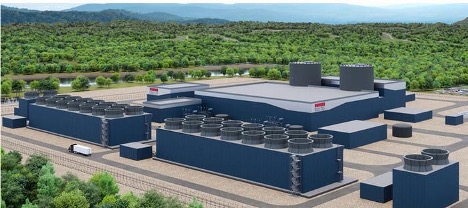
The Diablo Canyon nuclear plant in California is leveraging DOE’s Civil Nuclear Credit program to fund the plant’s life extension. On June 21, 2016, the plant’s owner Pacific Gas & Electric (PG&E) announced a Joint Proposal with Friends of the Earth, the Natural Resources Defense Council, Environment California, the International Brotherhood of Electrical Workers Local 1245, Coalition of California Utility Employees, and Alliance for Nuclear Responsibility to increase investment in energy efficiency, renewables and storage, while phasing out nuclear power.
Under the agreement, the operating licenses for Diablo Canyon Units 1 and 2 would not be renewed when they expire on November 2, 2024 and August 26, 2025, respectively. PG&E’s application to close Diablo Canyon, including the Joint Proposal, was approved by the California Public Utilities Commission (PUC) in January 2018.
But on December 14, 2023, PG&E won approval from the Public Utilities Commission to keep operating the Diablo Canyon nuclear plant.
In Tennessee, the Nuclear Regulatory Commission (NRC) issued a construction permit to Kairos Power for the Hermes low-power demonstration reactor at the East Tennessee Technology Parkin Oak Ridge to demonstrate U.S. capability to deliver clean, safe, and affordable nuclear heat. The permit, issued this past December, was the first non-light water reactor construction permit issued in the United States in 56 years.
New Nuclear Technologies Proliferate
DOE’s Advanced Reactor Demonstration Program provides funding for nuclear demonstration and risk reduction projects. Awardees include Gen IV reactor vendors and developers: TerraPower, X-energy, Kairos Power, Westinghouse, BWX Technologies, and Southern Company.
Small modular reactors (SMR) are the latest hope for flexible, secure nuclear power. President Biden signed a Congressional appropriations package providing $800 million to fund up to two Gen III+ SMR demonstration projects to be announced later this year. This package also appropriated $100 million for Gen III+ SMR design, licensing, supplier development, and site preparation.
The Inflation Reduction Act enacted the Clean Electricity Production tax credit and Clean Electricity Investment tax credit to support the deployment of all zero-greenhouse gas-emitting electricity generation, including from new nuclear electric generators.
The Department of Energy released a coal-to-nuclear technical study and information guide, highlighting the potential for more than 300 plant conversions and their ability to transition jobs and can be an economic boom for the communities they support.
The Export-Import Bank of the United States (EXIM) and U.S. Department of State announced the “EXIM SMR Financing Toolkit,” a suite of financial tools to support small modular reactor deployments and help U.S. exporters compete in the global small modular reactor market.
DOE, with support from the U.S. national labs, is working with, and providing resources for, industry partners to evaluate how international safeguards obligations and security can be integrated better early into the design process of new nuclear facilities.
In anticipation of the growing interest in reactor deployment, the Nuclear Regulatory Commission (NRC) is reforming its licensing and permitting processes to ensure that its reviews and analyses can be performed efficiently without compromising safety.
The NRC improved the proposed draft rule for a new technology-neutral licensing pathway, and the agency also issued licensing guidance for applicants, reducing regulatory uncertainty for new reactor concepts.
NRC staff approved a proposed rule for Commission approval which would utilize an advanced reactor generic environmental impact statement (GEIS) to streamline environmental reviews for licensing new reactors, and soon will streamline environmental reviews for extending operating licenses for existing reactors.
Preparing for factory-built microreactors, NRC staff identified ways to enable licensing of microreactors that would be factory-built and then transported to a deployment site.
Cooperating internationally, NRC has signed a memorandum of cooperation with the Canadian Nuclear Safety Commission and the UK Office for Nuclear Regulation to increase collaboration on the technical reviews of advanced reactor and small modular reactor technologies.
NRC has initiated process improvements for new reactor licensing such as the proposed rule for alternative physical security and new rule for emergency preparedness requirements for small modular reactors for regulatory stability, predictability, clarity, and minimizing applicant uncertainty.
Advancing the Supply Chain
The Biden Administration is developing a supply chain for reliable energy security and to reduce dependencies on Russian energy. On May 13, President Biden signed into law the “Prohibiting Russian Uranium Imports Act” which bans imported enriched uranium from Russia unless importers receive a waiver granted by the Secretary of Energy.
This law unlocks up to $2.72 billion made available at the President’s request this year to jumpstart new enrichment capacity in the United States for Low Enriched Uranium (LEU), the basic material to fabricate nuclear fuel, and high-assay low-enriched uranium (HALEU), needed by advanced reactor designs.
Centrus Energy Corporation produced the nation’s first 100 kilograms of HALEU in more than 70 years and delivered it to the DOE in November 2023. Centrus will now move to HALEU production at the rate of 900 kilograms per year at its American Centrifuge Plant in Piketon, Ohio.
Centrus President and CEO Daniel Poneman said at the time, “This critical milestone is essential to meeting the Department’s near-term HALEU needs, while laying the groundwork for the full restoration of America’s lost domestic uranium enrichment capacity.”
X-Energy Reactor Company, LLC, a Tennessee-based developer of advanced small modular nuclear reactors and fuel technology, was given $148 million in tax credits for an advanced nuclear fuel fabrication facility, which will make TRISO particle fuel.
The Department of Energy’s Advanced Research Program Agency-Energy (ARPA-E) is hosting earlier stage R&D programs for advanced nuclear, including $87 million of funding for 30 projects with the goals of lower capital costs, lower operating and maintenance expenses, and reduction of spent nuclear fuel.
The Consolidated Appropriations Act of 2024 made available $100 million for nuclear workforce training programs at universities, two-year colleges, and trade schools.
“Taken together, these actions represent the largest sustained push to accelerate civil nuclear deployment in the United States in nearly five decades,” the White House said in a May 29 statement.
With his eye on the quick, economical charging of millions of new EVs, President Biden intends to reestablish U.S. leadership in the nuclear industry – keeping existing nuclear plants operational, supporting the demonstration and deployment of advanced reactor technologies, making permitting more efficient and effective, securing and expanding the nuclear fuel supply, strengthening nuclear safety, security, and safeguards, and supporting an ambitious strategy to ensure U.S. nuclear leadership.
Toute l’actualité de Movin’On
dans votre boîte mail
Auteur
Partager
Tweets de @movinonconnect
Movin'On 2035 TODAY EP02 - Circular Economy & Competitivity
Movin’On 2035 TODAY EP01 – Fair Mobility for All https://x.com/i/broadcasts/1yNxagBrWZbGj
✨ THAT'S A WRAP!
Movin'On Summit 2024 has just concluded in Brussels!
More than 350 leaders and experts in sustainable mobility gathered to exchange ideas, collaborate, and share their vision for desirable and decarbonised mobility in Europe. Together, we explored ways to build…
🔴 Live from #MovinOnSummit2024
@AshaSumputh has just invited Denis Machuel, CEO at @AdeccoGroup and Florent Menegaux, President of the @Michelin Group & President of Movin'On
L’actualité de la mobilité durable
Découvrez les dernières tendances, des analyses thématiques et nos prochains rendez-vous



